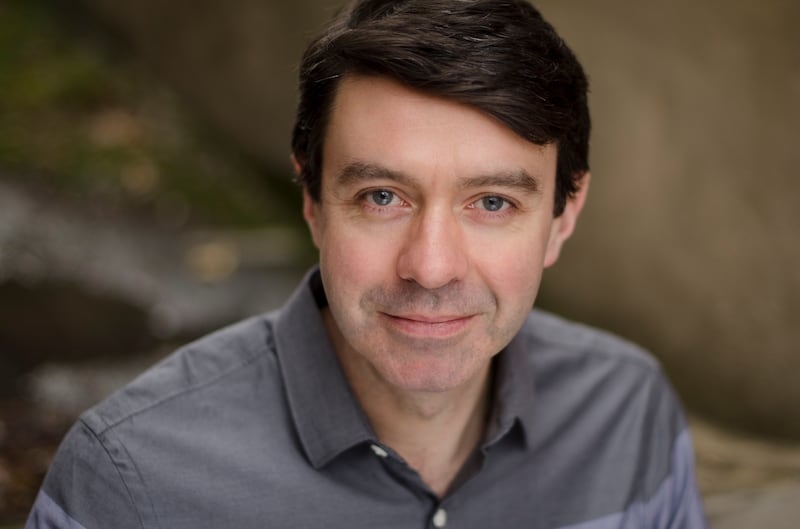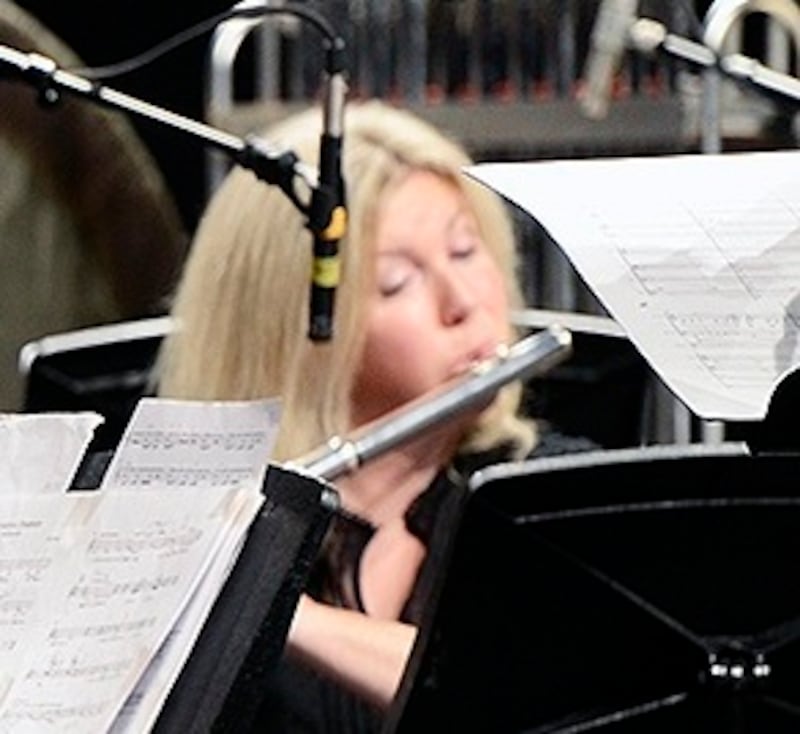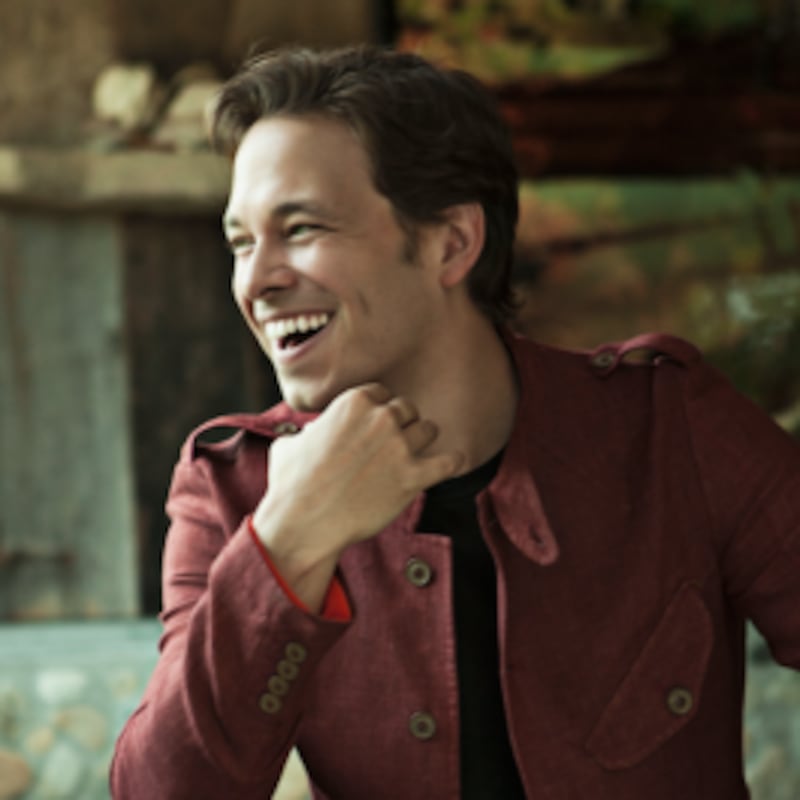On Thursday, October 23rd, 1997, Crash Ensemble gave its first concert, opening with Louis Andriessen’s Workers Union, composed in 1975 for “any group of loud sounding instruments”. It was clearly a statement of intent. Andriessen, with whom the ensemble’s founding artistic director Donnacha Dennehy had studied, described the piece as “a combination of individual freedom and severe discipline: its rhythm is exactly fixed; the pitch, on the other hand, is indicated only approximately, on a single lined stave. It is difficult to play in an ensemble and to remain in step, sort of thing like organising and carrying on political action.”
Dennehy also studied in the US, at the University of Illinois at Urbana-Champaign, and his musical tastes ran to trends in American music that had been only sparingly represented in Ireland before the foundation of Crash.
The ensemble celebrates its 25th birthday with the release of a new double album, [REACTIONS], a series of 17 duos written during lockdown, and a screening of films of the duos by Laura Sheeran at the Irish Film Institute on Wednesday, November 30th. The Crash 25! Wingform Installation at the National Concert Hall (Thursday, November 24th, to Sunday, November 27th) features Barry O’Halpin’s Wingform with video by Jack Phelan. And there are concerts at the NCH on Saturday, December 3rd (titled Charged Disruption), and Sunday, December 4th (Living Perspectives). See www.nch.ie.
Donnacha Dennehy, founding artistic director

What was the attraction of Crash Ensemble?
READ MORE
I was young, in my 20s. You want things to be different. You can either decide, I’ll sit and vainly hope that they’ll be different, or I’ll do something about it. I did it with a few pals of mine, got everyone interested. I wanted to offer new stuff and have a laboratory for trying out my own ideas as well. It felt more like a band to me than an ensemble that you’d be terrified of writing for.
The biggest surprise of your time with Crash?
At the very start, that we managed to get it going. And that it became something within a couple of years. That it’s still going now, after it managed to get on its feet, is less of a surprise.
The high point of your time with Crash?
I’ve had lots of high points. When I wrote Grá agus Bás [for sean-nós singer Iarla Ó Lionáird]: that felt like a very exciting time, the way that piece took off. It opened up new stuff for me, compositionally. I remember being really terrified writing the piece. That was a high point, personally. The portrait of Phill Niblock in Temple Bar Gallery, taking over all three levels, and having his films playing. Andrew Hamilton’s Music for People Who Like Art, an exciting piece, with an unravelling structure that you can kind of predict but that also suddenly jumps. I’ve also had high points since I stepped down from running it – the operas I wrote with Enda Walsh.
The low point?
For a while it was very hard for us to get venues for what we wanted to do. They’ve got a little better. But still, in Dublin it’s still difficult.
The three living composers who mean most to you (whether Crash has played them or not)?
Hans Abrahamsen, I find a real beauty and structural fascination in his work. Louis Andriessen and Gérard Grisey meant a lot to me [neither is living]. My choice changes based on what I’m interested in at the time. I don’t think it ever remains consistent. I’ve heard some interesting pieces by Linda Catlin Smith. And, just the other day, a beautiful string quartet by Michael Oesterle. Claude Vivier is someone I adore but he’s long dead.
Your favourite REACTION?
I haven’t heard them yet.
Crash in three words.
Welcoming, energetic, devoted.
Susan Doyle, flute

The attraction?
When I was asked to take part in the first concert to play in Louis Andriessen’s Workers Union, I didn’t really know what Crash was about. I hadn’t done much of that kind of music at the time. Crash was founded by friends of mine, Donnacha Dennehy, Michael Seaver, Andrew Synnott. So I was in from the beginning, while it was actually becoming what it is now. I was excited to be involved. It’s always fun to do something different and challenging, especially when you’re young.
Biggest surprise?
I didn’t expect to be playing on the side of an island, outdoors, as we did during our Crashlands project. That was a surprise. Playing fiendishly difficult new music outdoors is particularly challenging on the flute, especially when there are gusts of wind blowing. There’s also the camaraderie, the way that people have remained friends, the lack of inner turmoil. And the way the group has kept reinventing itself.
High point?
Doing Donnacha’s song cycle, That The Night Come, with Dawn Upshaw was a highlight for me. I’m particularly attracted to the voice. And having Iarla Ó Lionárd in for Donnacha’s Grá agus Bás was brilliant. And some of the venues: playing in the Poisson Rouge in New York, Carnegie Hall, Washington, Australia. All those things were wonderful. What I love about contemporary music is that it is contemporary, it is experimental, it is of the time.
Low point?
Nothing really stands out as a low point. You learn from everything.
Living composers who mean most?
Thomas Adès. Donnacha. And for flute music I really like Kaija Saariaho.
Favourite REACTION?
Obviously the ones that I’m in. [Éna Brennan’s Runaway, Anna Murray’s Crosstalk, and Amy Rooney’s Pendulums and Sundials.]
Crash in three words.
Family, dedication, fun.
Ryan McAdams, principal conductor

The attraction?
We were match-made. No one’s consent. I was match-made by what was then Wide Open Opera, now amalgamated into Irish National Opera. Gavin O’Sullivan [general manager of Wide Open Opera] had produced a live film-score show of Terrence Malick’s The Tree of Life, which I conducted. At the end, I said to him, if you ever have a contemporary opera, give me a ring. Two years later, I got an email asking if I would conduct Donnacha Dennehy’s The Second Violinist with Crash. I turned up as the hired conductor, and we completely fell for each other. We just absolutely adored each other by the end of that process. Some years later, Kate [Ellis] asked me to become principal conductor. All inevitable and organic.
Biggest surprise?
The extent to which the ensemble functions like a family. The way that people care for each other, hold each other responsible to their highest artistic goals, and the desire to commune with each other and be joyful and playful with each other off stage.
High point?
Being able to reach the levels of effortlessness with enormously complex works, the way we did with Second Violinist by the time we got it to London, and First Child [also by Dennehy] by the time we took that on tour. Being able to repeat these works over and over again until they are as deeply ingrained in our systems and souls the way Beethoven symphonies are for major orchestras. That’s a level of satisfaction that feeds all of us.
Low point?
The pandemic and having to come back from it, having been scattered to the winds.
Living composers who mean most to you?
Donnacha Dennehy, American composer Andrew Norman who will be played by Crash in the future, and Swiss composer Michael Jarrell, whose Cassandra made me sweat through my clothes. The composer who probably means the most to me is John Adams.
Your favourite REACTION?
I haven’t heard them yet. They were lockdown pieces for small groups.
Crash in three words.
Electric, evolving, essential.
Kate Ellis, artistic director
The attraction?
It’s good fun. Musically, it’s definitely challenging. It’s exciting to be able to take a piece of music that nobody really knows and kind of mould it and shape it and get under the skin of it. And find a way of interpreting something that’s totally new and totally unfathomable.
‘While we were playing the piece, the cattle moved closer and closer and closer to the edge of the fence... When the audience clapped there was this big stampede of cows’
Biggest surprise?
During the Crashlands tour, we played at the Holy Well in Clonmel, as part of the Clonmel Junction Festival. We played at dawn, and there were lots of cattle in the fields beside the well. We were premiering Linda Buckley’s Chrysalism. While we were playing the piece, the cattle moved closer and closer and closer to the edge of the fence. It was like they were all lined up, behind the audience, listening to Linda’s piece. When the audience clapped there was this big stampede of cows, flying off into the distance. Given Linda’s connection to farming, it was a very special moment.
High point?
There’s a few. The most recent was actually being able to play together with no masking, no distancing. After that whole time of being really separated from each other, there was huge relief and a great sense of connection, just being able to communicate with no masking. And the operas, getting to give so many performances, getting to grow and sink your teeth into Donnacha’s music. Carnegie Hall...
Low point?
Having to draft emails cancelling work in 2020.
What three living composers mean the most to you?
Three of the people who wrote big pieces we’re playing in December: Donnacha Dennehy, Barry O’Halpin and Liza Lim. They all have a very particular language, and while Barry was writing Wingform, we were working with him quite a lot, so the piece is very personal to him and very personal to Crash, especially with him being a member of the ensemble. Donnacha is obviously in our DNA. I love what Liza does, the theatre and the drama, the soundworld and how she uses the instruments.
Your favourite REACTION.
So many of them. Dave Fennessy’s piece, JACK, for two electric guitars that are unamplified. It’s a different sound quality, it’s as if you had your ear very, very close to an electric guitar.
Crash in three words.
Bold, adventurous, fun.














